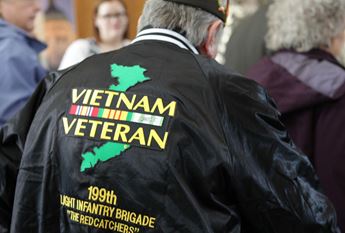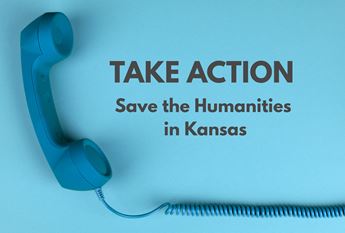

Voices and Votes: The Fight for Indigenous Voting Rights
March 13, 2023

Elizabeth Bender Roe Cloud with Marion and Anne Woesha, c. 1920. Roe Family Papers (MS 774), Manuscripts and Archives, Yale University Library.
The history of American democracy is complicated and includes instances of unjust treatment of its citizens and of those who rightfully should be citizens. Over the last century, Indigenous leaders have continued to fight for rights and recognition across the nation and in Kansas. The story of Henry and Elizabeth Roe Cloud and the founding of the American Indian Institute in Wichita is an example of triumph in the face of adversity.

Henry Roe Cloud. Roe Family Papers (MS 774), Manuscripts and Archives, Yale University
The SAI was an organization founded by and for Native people in 1911 to improve conditions in education, health, and civil rights. Many members took on the right-to-vote fight, since Indigenous people remained unable to vote and many were unable to gain citizenship. And suffrage was a topic already on the minds of many Americans, as the women’s suffrage movement – almost exclusively the white women’s suffrage movement – was gaining momentum. Zitkála-Šá, a popular composer, poet, and artist, joined the women’s suffrage movement to draw attention to the denial of voting rights and citizenship rights for Indigenous Americans. These omissions kept them from being able to manage their land, their money, and their children’s education. Similarly, Bottineau Baldwin attended the first women’s suffrage march in Washington, D.C., in 1913 and went on to use subsequent speaking engagements to promote the idea that Native people should be members of their own self-governing nations, as well as United States citizens.

American Indian Institute, Wichita. G.E.E. Lindquist Papers, 60, 1435, The Burke Library Archives (Columbia University Libraries) at Union Theological Seminary, New York.
The A.I.I. campus was located at 3500 E. 21st Street in Wichita, and the Wichita Eagle newspaper reported on May 16, 1915, that The Wichita Club (forerunner to today's Wichita Chamber of Commerce) met on May 18, 1915, and "guaranteed $5,000 to be used in purchasing a campus for an Indian academy in the Fairmount district.” According to the article “The Other School on the Hill” on May 30, the Eagle reported that "the probable first president of the new Indian school, to be located on the McGinnis 40-acre tract on 21st Street and Ellis [Bluff] Avenue, will be Henry Roe Cloud, born on the Winnebago Indian reservation in Nebraska. … A beginning of the school will be made at the McGinnis farmhouse this fall. Later the school will be built." The property was officially handed over in July for $15,000. 
A map showing the Indian Reservations of the United States in relation to the American Indian Institute in Wichita, Kansas, c. 1920. Roe Family Papers (MS 774), Manuscripts and Archives, Yale University Library.
Most students enrolled at A.I.I. were from Oklahoma. The school’s enrollment reached its peak in 1921 with 46 students. Once established, funding came from Indigenous patrons, Wichita donors, the Kansas Chapter of the Daughters of the American Revolution, and various churches. The Roe Clouds were popular with students, promoted Indigenous voices and points of view, and often volunteered or were recruited to participate in national Native American educational and civil and voting rights movements. Finding themselves increasingly busy on the national stage, the Roe Clouds decided to hand control of A.I.I. to the Board of National Missions of the Presbyterian Church in 1927 and in 1933 couple moved to Lawrence, where he became the first Indigenous President of Haskell Institute, now known as Haskell Indian Nations University. With the onset of the Great Depression and the loss of the charismatic Cloud family, enrollment declined, and A.I.I.’s doors closed in 1939.
Despite the best efforts of the Roe Clouds, Zitkála-Šá, Bottineau Baldwin, and many Indigenous activists, it wasn’t until the 1960s and the passage of the 24th Amendment when the United States finally protected the rights of all Indigenous people to vote as citizens of the United States. There were acts and amendments before then that should have guaranteed Native Americans the right to vote without intimidation but did not.
“Indigenous Americans experienced decades of setbacks and injustice before they gained the right to vote,” says Erin Raux of the Mid-American All-Indian Museum. “Hosting the Voices and Votes Smithsonian exhibition is an opportunity to introduce a wider audience to Indigenous Americans’ fight for voting rights, citizenship, and full access to democracy. We’ll also use the exhibition to look to the future, honoring trailblazing Indigenous Kansas lawmakers and partnering with social service agencies for conversations about Indigenous civic engagement in the 21st century.”
The Mid-America All-Indian Museum presents The American Indian Vote, their companion exhibition to the Voices and Votes: Democracy in America Smithsonian exhibition. The exhibitions will be on display May 13 – June 25, 2023. Visit theindiancenter.org for more information.



